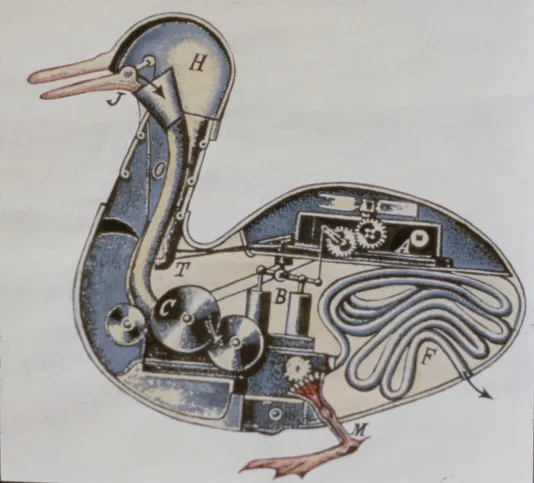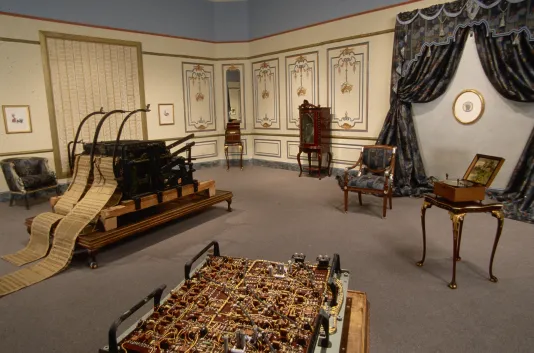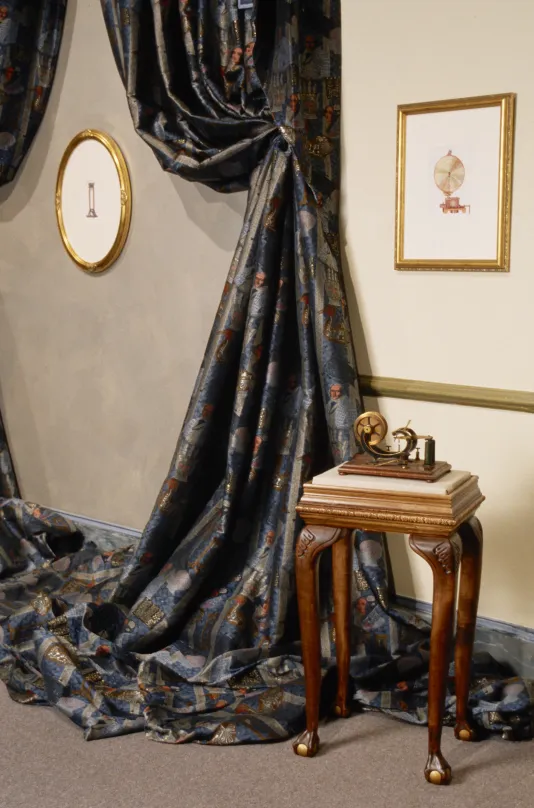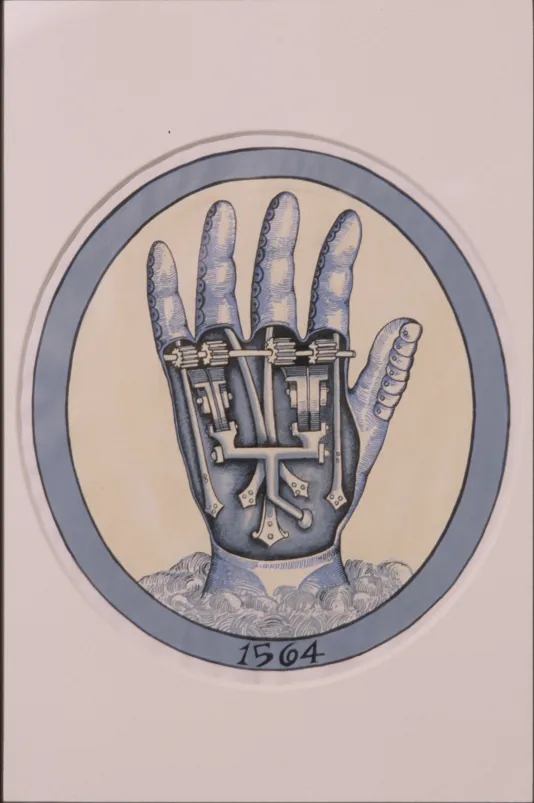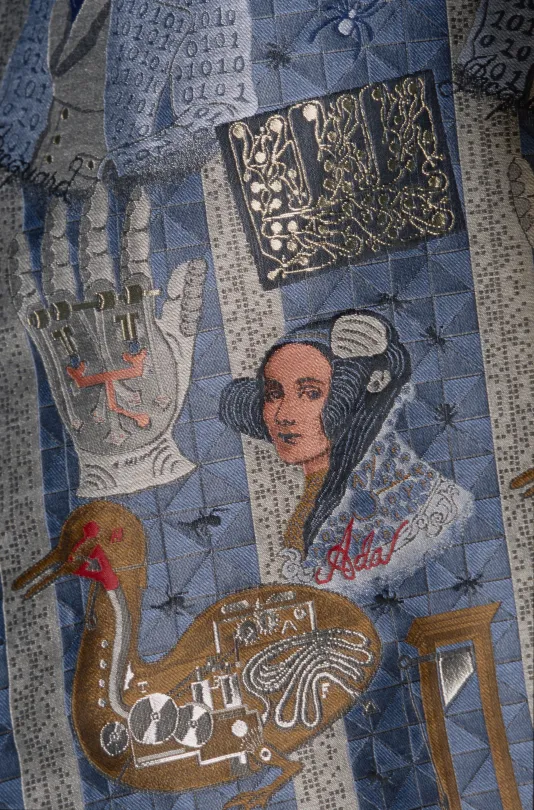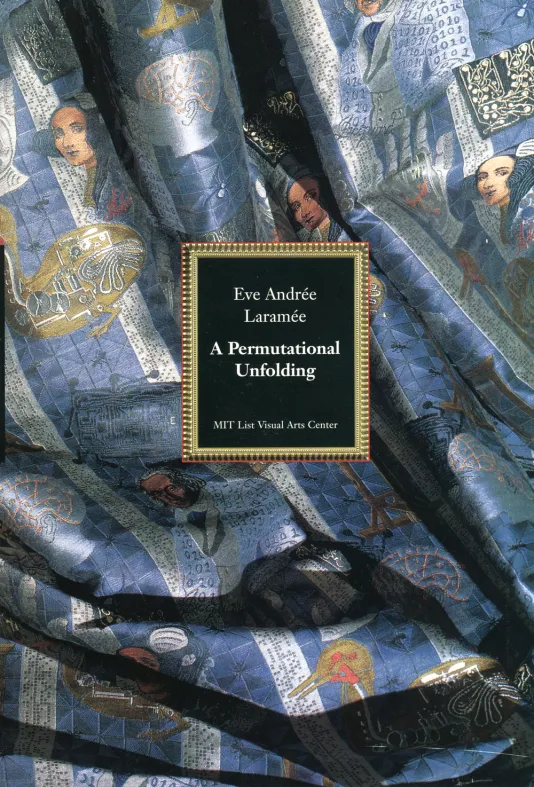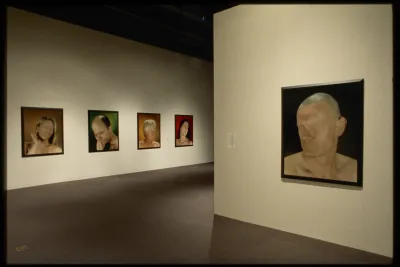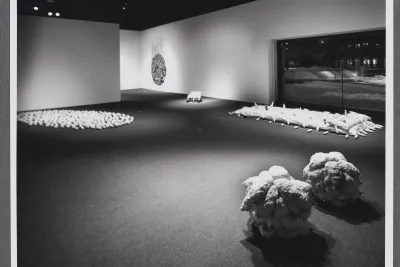Eve Andrée Laramée, Vaucanson’s Duck Automation, 1999. Detail of a framed reproduction of a historical illustration, altered and hand-colored by the Artist. Gouache on paper. 20 x 16 inches. Archival slide image.
Eve Andrée Laramée: A Permutational Unfolding
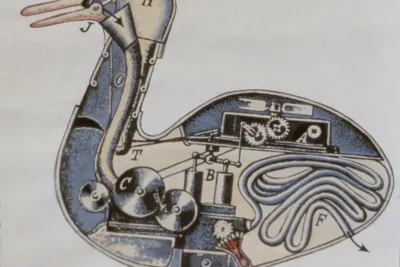
Laramée’s inspiration and point of departure for the exhibition A Permutational Unfolding was an encounter in a history museum more than two years ago with a Jacquard loom, a machine invented in 1801 by Joseph-Marie Jacquard which operated on a binary system of punched cards upon which the fabric pattern was encoded.
These punch cards are identical in function to those employed until the mid-twentieth century in computational devices. Laramee will explore these and other resonances between the pre-history of digital technology — going back more than 200 years — and Modern era digital technology. To emphasize the fact that digital technology — considered by most a feature of contemporary culture — is part of a centuries-old history, Laramée’s installation may intially startle the viewer with its appearance, which will not be that of a 21st-century cybersalon, but rather the transformation of the gallery into a Baroque-era drawing room such as might have existed during Joseph-Marie Jacquard’s time.
The gallery will be lushly decorated with yards and yards of Jacquard fabric, used as draperies and upholstery for Napeoleonic-era reproduction furniture. The fabric itself acts as a metaphor and container for meaning within the exhibition, as it was specially designed for the project by Ms. Laramée and custom-woven by MTL, Inc., a mill in Scranton, Pennsylvania. Imagery of punch cards, 19th-century automata, circuit boards, guillotines, the visages of Jacquard and Ada Lovelace (who was Lord Byron’s daughter and author of the first computer program), and biological references which indicate how structures within the natural world serve as models for new technology, including Artificial Intelligence, populate the pictorial tapestry fabric. In addition, artifacts related to computing from the early 20th century to the Modern era will be displayed throughout the room. In so doing, Laramée posits a non-linear and long-standing history of technology woven from myriad societal influences and reaching into the areas of the decorative arts, politics, the social history of technology and mechanization, 19th-century automata and thinking machines, musical instruments, and gender and class issues.
About the Artist
Eve Andrée Laramée presently resides in Brooklyn, New York and is a professor of sculpture at Sarah Lawrence College, Bronxville, NY. During 1999 her work will be seen in a solo exhibition at the Austin Museum of Art, Texas, and in group exhibitions at the Ludwig Forum fur Internationale Kunst, Aachen, Germany; Arti et Amitcitiae, Amsterdam, the Hudson River Museum, Yonkers, New York, and the Tweed Museum of Art, University of Minnesota, Duluth. She has also exhibited her work at the Forum for Contemporary Art, St. Louis; the 1997 Venice Biennale; and at the High Museum of Art, Atlanta.
Eve Andrée Laramée: A Permutational Unfolding was organized by Jennifer Riddell, assistant curator, List Visual Arts Center. The exhibition will be accompanied by a full-color catalogue with essays by art and cultural historians Barbara Maria Stafford, University of Chicago; and Jonathan Crary, Columbia University; Jessica Riskin, MIT; with an introductory essay by the curator, Jennifer L. Riddell.
Exhibition coordination: Jon Roll, exhibition designer/gallery manager, List Visual Arts Center. Support and funding for the exhibition was provided by The LEF Foundation. MTL Mills, Inc., Scranton, PA. Funding for the catalogue was provided by: The Elizabeth Firestone Graham Foundation
